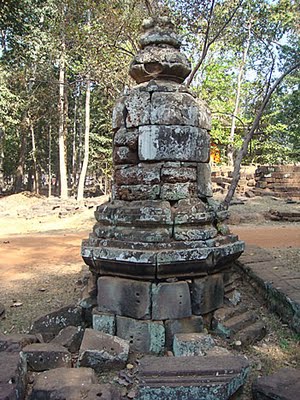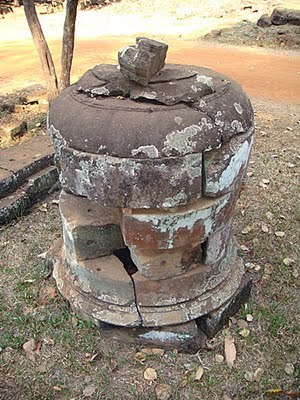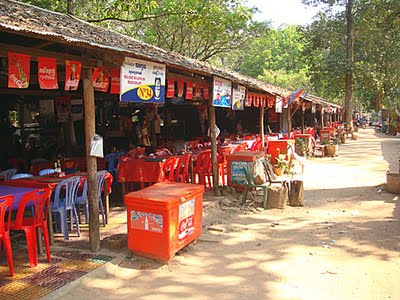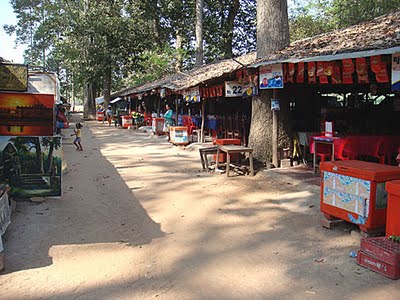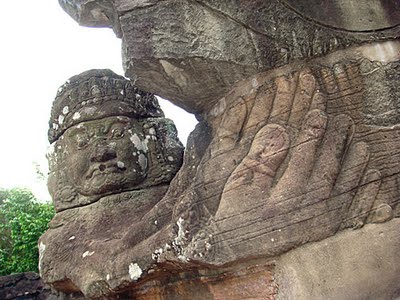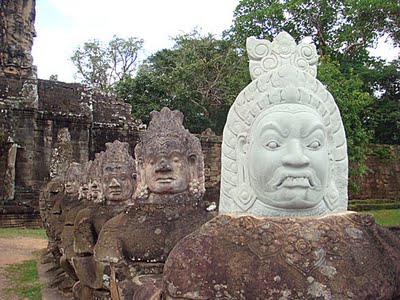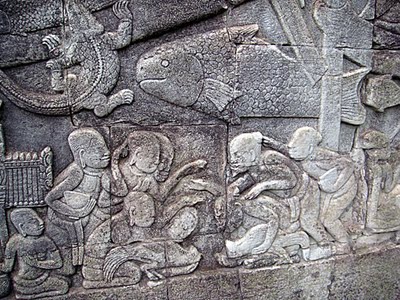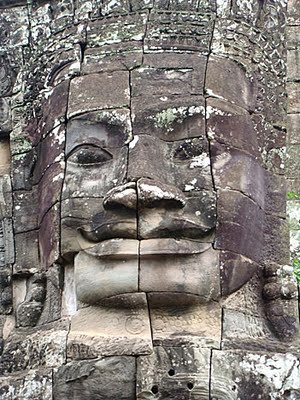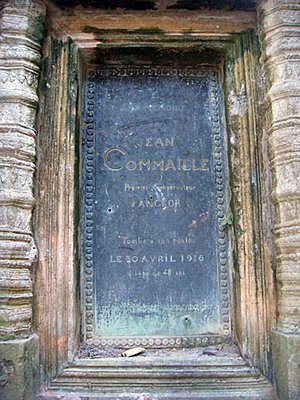 The plaque on the tomb of Jean Commaille at Angkor
The plaque on the tomb of Jean Commaille at Angkor
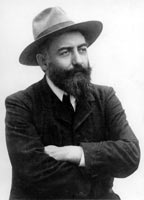
Angkor isn't all temples and children trying to sell you guidebooks, kramas and "cold drink mister." In the quiet south-west corner of the road that runs around The Bayon, at the very center of Angkor Thom, lies the tomb of
Jean Commaille (right), the first curator of Angkor. He was 48 years old when he was murdered by bandits on 30 April 1916 on the road to Angkor Wat. Jean Commaille was the first of several Frenchmen to make a significant contribution to the conservation of Angkor as the first curator of
Ecole Francaise d'Extreme-Orient, better known as EFEO, the authority responsible for maintenance and protection of the temples in the Angkor area. It was he who began the mammoth task of clearing the temple sites from the jungle that had consumed them and wrote the first guidebook - Guide aux ruines d'Angkor - to the temples in 1912.
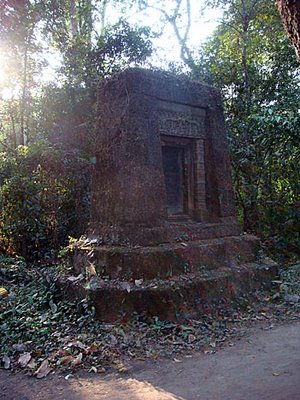 The granite tombstone of Jean Commaille, Angkor's first curator
The granite tombstone of Jean Commaille, Angkor's first curator
Commaille was a painter who went to Indochina with the French Foreign Legion. He was in Angkor painting in 1898, and was then employed by the public works department in a variety of jobs before becoming curator in March 1908. His pioneering work and lifestyle - his home was a straw hut beside the Angkor Wat causeway - evidently suited him. Not so his wife. Apparently unable to live without her piano, she packed her bags and left. Commaille's initial task was to clear Angkor Wat of vegetation before beginning on Angkor Thom. He opened up the great avenues leading to the five gates, cleared the Bayon's courtyards of rubble - stacking the blocks of stone in huge piles, where his successors would search for missing fragments from the bas-reliefs - and cut down the trees in the square framed by the Royal Terraces. It was a slow job and one that was never finished. At the time he lamented that "Every month, perhaps every day, some stones would fall. The complete ruin of the temple was only a matter of time, and it was necessary to consider how to halt it without further delay." Today Commaille's tomb, granite rock crowned by a lintel containing Indra astride his three-headed elephant, sits forlornly in its silent corner, surveying the Bayon as tourists flock to his Angkor Park in ever-increasing numbers.
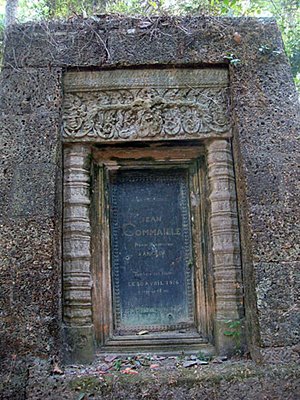 Commaille's tomb, crowned by an Indra lintel and two colonettes
Commaille's tomb, crowned by an Indra lintel and two colonettesLabels: Angkor, Bayon, Jean Commaille
